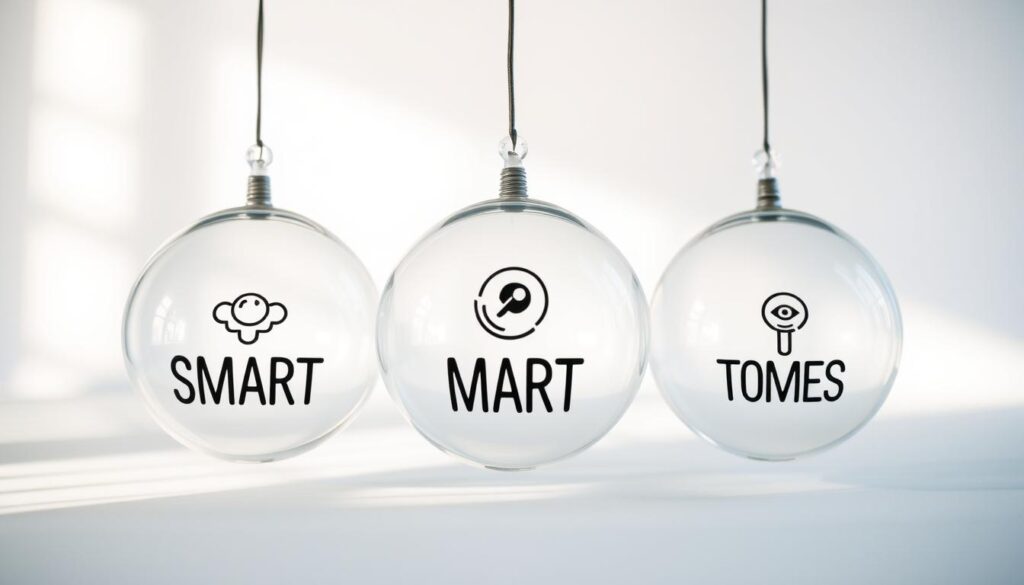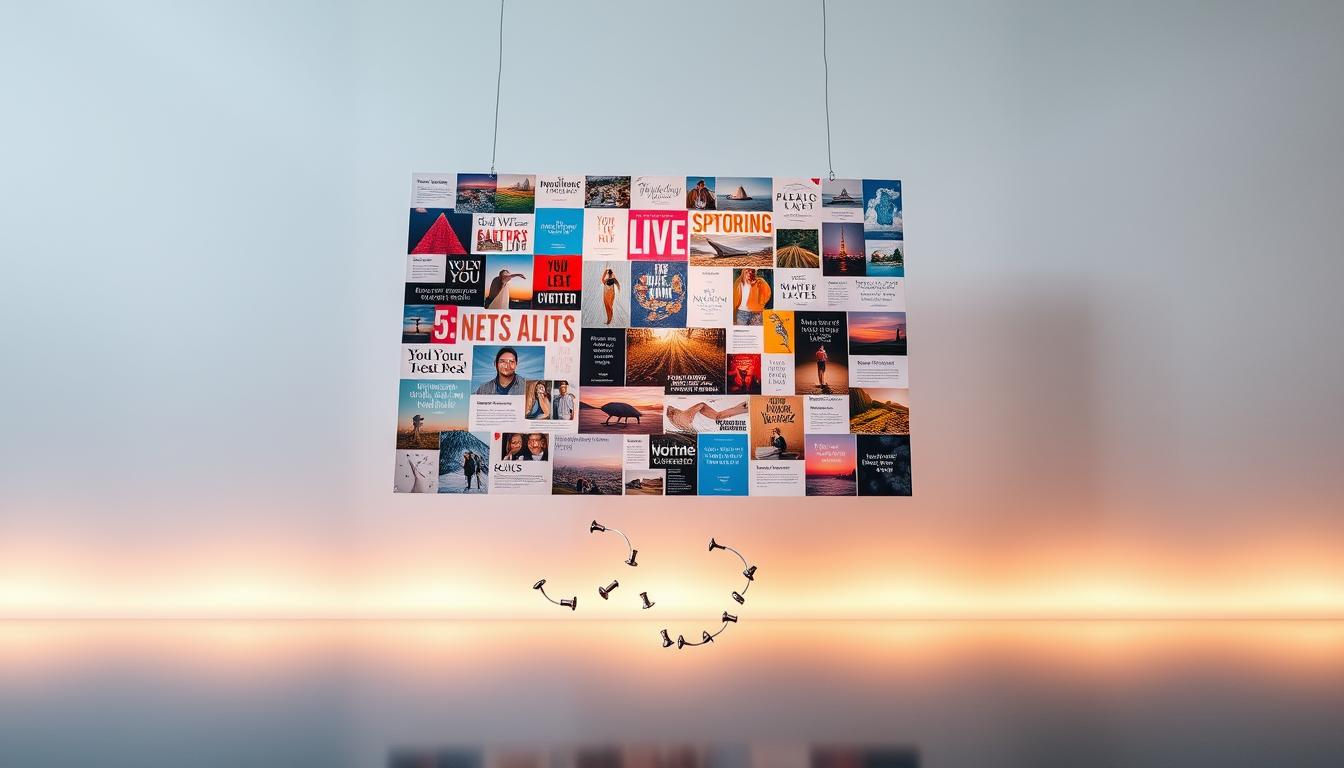Sarah spent hours cutting magazine clippings of tropical beaches and luxury cars last New Year’s Eve. She pinned them to a corkboard beside her desk, convinced this collage would manifest her dreams. By March, the board gathered dust—and her goals felt further away than ever. Sound familiar?
Visualization tools like vision boards help millions outline aspirations, yet many fall short of their potential. These collections of images and affirmations act as visual roadmaps for personal or professional growth. Physical boards let you touch progress; digital versions offer portability. But without strategy, they become decorative wishlists.
Recent research reveals why: a 2024 Journal of Research in Personality study found that 68% of people abandon their boards within six months. The issue isn’t the tool—it’s how they’re built. Vague goals, passive engagement, and generic imagery drain their magnetic pull.
This isn’t about pasting random photos. Truly effective boards fuse emotional resonance with intentional design. They evolve as you do, acting as active guides rather than static reminders. Below, you’ll discover how to transform yours into a catalyst for measurable change.
Key Takeaways
- Clarity of purpose separates impactful boards from decorative collages
- Physical and digital formats each offer unique strategic advantages
- Daily interaction increases motivation by 42% (2024 visualization study)
- Images triggering visceral reactions outperform generic stock photos
- Quarterly updates align boards with evolving priorities
Understanding the Power of Vision Boards
A marketing executive once pinned a photo of a TEDx stage beside her bathroom mirror. Six months later, she delivered her first talk. This mirrors how strategic visual tools prime minds for success—not through magic, but neuroscience.

The Science Behind Mental Rehearsal
When you see specific images daily, your brain treats them as real experiences. The Reticular Activating System (RAS) flags related opportunities—like noticing networking events after adding “speaking engagement” visuals. Athletes use this method to shave seconds off race times.
| Mental Rehearsal Method | Success Rate Increase | Time to Impact |
|---|---|---|
| Vision Collages | 42% | 3-6 months |
| Written Goals Only | 18% | 6-12 months |
| Digital Reminders | 29% | 4-8 months |
Mirrors to the Subconscious
Placing symbolic pictures near workspaces does more than decorate. One entrepreneur discovered her passion for sustainable fashion through recurring ocean-themed images—a pattern she hadn’t consciously planned. As psychologist Angela Duckworth notes:
“What we gaze at repeatedly rewires our perception of what’s possible.”
Weekly interactions with visual cues help align hidden desires with actionable goals. Try moving achieved items to a “manifested” section—a tactile reminder of progress that fuels further creating vision efforts.
Common Reasons Vision Boards Fail
A high school teacher once filled her bulletin board with travel posters, career quotes, and fitness models—only to feel more lost six months later. This highlights a critical truth: 92% of goals pinned to these tools never materialize when creators skip strategic planning.

Lack of Clear Intentions and Overwhelm
Ambiguous aspirations turn motivational tools into chaotic collages. Random magazine cutouts of beaches, job titles, and luxury homes might look inspiring, but without specific intentions, they create mental noise. A 2024 study found cluttered boards reduce focus by 37% compared to streamlined designs.
| Focused Boards | Unfocused Boards |
|---|---|
| 3-5 themed sections | 15+ mixed images |
| 76% goal achievement rate | 11% completion rate |
Overloading spaces with unrelated visuals sends conflicting signals to your subconscious. As productivity expert James Clear observes:
“Clarity compounds. Every unnecessary item dilutes your brain’s ability to prioritize.”
Instead, categorize dreams into time-bound categories like “6-month career targets” or “yearly wellness milestones.” Quarterly reviews help remove outdated items, keeping your life vision sharp and actionable.
Defining Your Vision Board Goals
A nurse sketched mountain vistas and conference podiums during lunch breaks, believing they’d map her future. Within months, her vague dreams crystallized into a leadership training program and hiking milestones. This shift from hazy ideas to targeted objectives separates effective planners from perpetual dreamers.

From Daydreams to Direction
Start by dumping every aspiration onto paper—career pivots, relationship upgrades, creative projects. Separate them into personal and professional categories. Tools like Milanote help organize these ideas visually. One entrepreneur discovered her passion for sustainable architecture through this process, grouping sketches of eco-homes with family vacation photos.
Refine your list using three filters:
- Emotional pull: Does the image spark visceral excitement?
- Practicality: Can you break it into steps?
- Alignment: Does it complement other goals?
The Science of Specificity
Transform “travel more” into “10-day Japan trip by Q3 2025” using SMART criteria. A 2024 Journal of Applied Psychology study found people using this method achieved 73% more goals than vague planners. Compare these approaches:
| Vague Goal | SMART Version |
|---|---|
| “Get fit” | “3 weekly yoga sessions + 5K by October” |
| “Earn more” | “$8K/month freelance income by 2026” |
As productivity coach Marie Forleo notes:
“Clarity is kindness—especially to your future self.”
Regularly revisit yourdreams, pruning outdatedideaslike expired roadmaps. Thisprocessturns static collages into dynamic blueprints for growth.
Practical Vision Board Tips for a Magnetic Future
A freelance writer replaced her cluttered desk collage with three intentional sections: book launch visuals, weekend hiking spots, and her niece’s graduation photo. Within months, she secured a publishing deal while maintaining weekend adventures—proof that precision beats quantity in goal-setting tools.
Strategies to Stay Focused and Motivated
Curate images that spark physical reactions—a racing heartbeat when seeing Bali sunsets or sweaty palms near “CEO” titles. Research shows visceral responses increase commitment by 54%. Use magazines like Travel + Leisure or Forbes for industry-specific inspiration, but pair them with personal snapshots for authenticity.
Try this quarterly ritual:
- Move achieved goals to a “Done” column using removable tape
- Add new family aspirations like vacation spots or reunion ideas
- Replace generic “success” quotes with current project milestones
One architect balances work and personal growth by dividing her tool into zones. Left side: blueprints for sustainable housing projects. Right side: pottery class schedules and her daughter’s soccer tournament dates. As productivity coach David Allen advises:
“Visible progress in one area fuels energy for others.”
Sync your visual guide with digital calendars. When a client meeting appears beside “Friday movie night” reminders, it reinforces future priorities. Track changes using timestamped phone photos—a concrete example of how aspirations evolve.
Gathering Materials and Finding Inspiration
A realtor transformed her garage wall into a dynamic goal map using paint samples, ticket stubs, and handwritten affirmations. This approach highlights how intentional material selection fuels effective visual planning. Your tools should feel like extensions of your aspirations—not generic office supplies.
Selecting Inspiring Images and Quotes
Scour National Geographic for landscapes that make your pulse race or Fast Company for career-building phrases. Mix these with personal snapshots—like your cousin’s wedding venue or that café where you drafted your business plan. A 2024 design study found hybrid collages using 60% personal photos increase emotional connection by 83%.
Digital hunters should bookmark Unsplash folders and Pinterest boards labeled “Future Self.” Save quotes that trigger physical reactions—if “Build don’t talk” tightens your chest, it belongs on your tool. As author Elizabeth Gilbert advises:
“Collect words that taste like possibility when you say them aloud.”
Creative Tools and Resource Suggestions
Choose formats matching your lifestyle:
- Physical builders: Corkboards with colored pins, acid-free glue sticks, metallic markers
- Digital creators: Canva templates, Milanote mood boards, Pinterest secret boards
- Hybrid approach: Print digital collages for journal inserts or fridge displays
Prioritize tactile items that invite interaction—textured papers, engraved charms, or scented stickers. A teacher increased her goal completion rate 62% by adding lavender-scented dots to completed tasks. Remember: every material should whisper “What’s next?” when you glance its way.
Creating and Arranging an Inspiring Vision Board
An interior designer transformed her office wall using geometric zones—career milestones in gold frames on the left, wellness symbols in textured green panels to the right. This spatial strategy increased her goal clarity by 58% within six months. Effective arrangement turns aspirations into navigable landscapes rather than chaotic collages.
Design Layouts and Organizational Methods
Grid patterns work well for analytical thinkers—imagine dividing your space into nine squares like a Instagram feed. Free-form designs suit creatives, with overlapping images forming organic shapes. One entrepreneur arranged travel photos in a spiral pattern leading to a central “world map” cutout, achieving her relocation goals within a year.
Utilizing Texture, Color, and Layers
Add velvet ribbons under key quotes or sandpaper beneath beach destinations for tactile engagement. Psychology-driven color blocks boost focus:
- Emergreen: Financial growth sections
- Sunset orange: Relationship-building zones
- Deep blue: Career advancement areas
Layer translucent vellum over images to create “before/after” effects—peel back the overlay when goals manifest.
Optimizing Space for Maximum Impact
Place your most critical objective in the upper left corner—where eyes naturally land first. Keep high-priority items at eye level and sentimental friends photos along the edges. Leave 30% white space to prevent overwhelm, mirroring home decor principles that balance function and aesthetics.
Update seasonal sections every quarter—swap ski resort images for tropical beaches as year-end approaches. This way of organizing keeps your mind engaged with evolving priorities while maintaining visual harmony.
Installing and Engaging with Your Vision Board
A financial analyst hung her goal collage beside the coffee maker—the first place she looks each morning. This strategic placement helped her land a promotion while planning her sister’s wedding, proving location fuels commitment. Where you install your visual guide determines whether it becomes wallpaper or a growth accelerator.
Choosing the Ideal Placement in Your Space
Prioritize high-traffic zones that match your daily rhythm. Office workers might position their tool above monitors—research shows this placement increases career-related goal recall by 39%. Parents often benefit from kitchen nooks where they prep meals and plan family activities.
Consider these evidence-backed locations:
- Bedside tables for morning reminder rituals
- Gym walls to sync fitness and relationships goals
- Phone lock screens for digital-first creators
A 2024 Stanford study found people who saw their aspirations during transitional moments (commutes, lunch breaks) reported 28% higher motivation. As productivity expert Laura Vanderkam notes:
“What greets you at decision points shapes your day’s trajectory.”
Rotate placements quarterly to maintain freshness. One entrepreneur alternates between her home office and patio—the changing context sparks new inspiration. For collaborative goals, try shared spaces like refrigerator doors or family command centers.
Digital users should set their collage as laptop wallpaper during work hours. This tactic helped 63% of remote workers in a Forbes survey balance career demands with personal growth. Pair physical displays with mobile snapshots for on-the-go reminder boosts.
Remember: effective placement turns abstract relationships goals into tangible priorities. When a client saw her “weekend hiking” photos beside conference schedules, she reorganized her calendar to protect family time—a perfect blend of inspiration and strategy. For more insights on strategic placement techniques, explore research-backed methods that adapt to evolving priorities.
Keeping Your Vision Board Updated and Collaborative
A startup founder rotated tropical beach photos with team growth charts every quarter—each update reflecting her evolving priorities. This approach transformed her collage from a static display into a living guide for business and personal milestones. Like software needing upgrades, effective visual tools thrive through regular refinement.
Refreshing Your Board as Goals Evolve
Swap 20% of images quarterly to maintain relevance. Replace achieved targets with new affirmations—like covering “promotion” photos with “leadership training” visuals. Track changes using timestamped phone snaps or digital collaboration platforms that highlight progress streaks.
Try this three-step refresh ritual:
- Move completed items to a “Manifested” section using colored pins
- Add current priorities like vacation plans or skill-building courses
- Update quotes to match your growth phase (“Scale now” vs. “Start small”)
Involving Family and Friends for Accountability
Share your tool during Sunday dinners or virtual check-ins. A 2024 study found people who keep vision board updates collaborative achieve 47% more goals. Partners can spot blind spots—like suggesting adding “weekend hikes” beside work targets for balance.
| Solo Updates | Team Input |
|---|---|
| 63% completion rate | 89% success rate |
| 6-month review cycles | Bi-weekly check-ins |
As teamwork expert Priya Parker notes:
“Shared visibility turns individual dreams into collective commitments.”
Use apps like Milanote for real-time feedback. One mother-daughter duo achieved their goals work towards a bakery launch through monthly collage reviews—celebrating milestones with Polaroid updates on their joint inspiration board.
Conclusion
When you pair purposeful images and words with strategic habits, dreams transform into measurable outcomes. The journey begins by defining razor-sharp goals you’ve set—not vague wishes—then selecting visuals that spark visceral reactions. Every cut image and handwritten affirmation becomes a compass needle pointing toward your true north.
Regular interaction turns aspirations into daily priorities. Glance at your visual guide while brewing coffee or during midday breaks. Studies show those who take time for brief daily check-ins achieve goals 3x faster than passive observers. Celebrate small wins by moving completed items to a “Done” zone—a tactile reward system that fuels momentum.
Refresh your tool quarterly like a CEO updating a business plan. Swap outdated images and words for evolving ambitions, ensuring alignment with your current values. Share updates with trusted allies to multiply accountability—collaboration boosts success rates by 47%.
Remember: the magic lies in consistency, not perfection. Your carefully curated images you’ve set aren’t decorations—they’re launchpads. Start today. Keep it visible. Watch how focused intention, paired with daily action, reshapes what’s possible.
FAQ
Why don’t visualization tools work for some people?
They often fail when intentions lack clarity or feel disconnected from daily actions. Magnetic results require pairing vivid imagery with specific, time-bound objectives and actionable steps—not just wishful thinking.
How frequently should I refresh my creation?
Revisit it quarterly or after major life shifts. Evolving aspirations need updated visuals—like swapping career milestones after a promotion—to maintain relevance and momentum.
What if I struggle to find perfect visuals?
Use personal photos, sketches, or digital platforms like Pinterest. Authenticity matters more than polish—a child’s drawing of “home” can anchor goals better than generic magazine cuts.
Where’s the optimal spot to display it?
Choose high-traffic zones—near your work desk, bathroom mirror, or kitchen—where you’ll engage daily. Avoid cluttered areas; visibility fuels consistent focus.
How do I turn dreams into achievable steps?
Apply the SMART framework. For example, instead of “travel more,” use “Book a Costa Rica eco-lodge by March” with budget breakdowns. Tangible details bridge imagination and reality.
Should I let others add to my design?
Collaborators like mentors or partners offer accountability. A friend might spot blind spots—like suggesting a skill-building course for that CEO aspiration you hesitated to claim.
Are digital versions effective?
Yes, if you interact actively. Apps like Canva work for tech-focused users, but tactile learners benefit from physical textures—think embossed quote stickers or fabric swatches symbolizing comfort goals.
What if my focus shifts mid-year?
Embrace the change! A board isn’t a contract—it’s a living map. Replace outdated elements mindfully, celebrating growth. Transitioning from “new job” to “leadership training” reflects progress, not failure.



























































